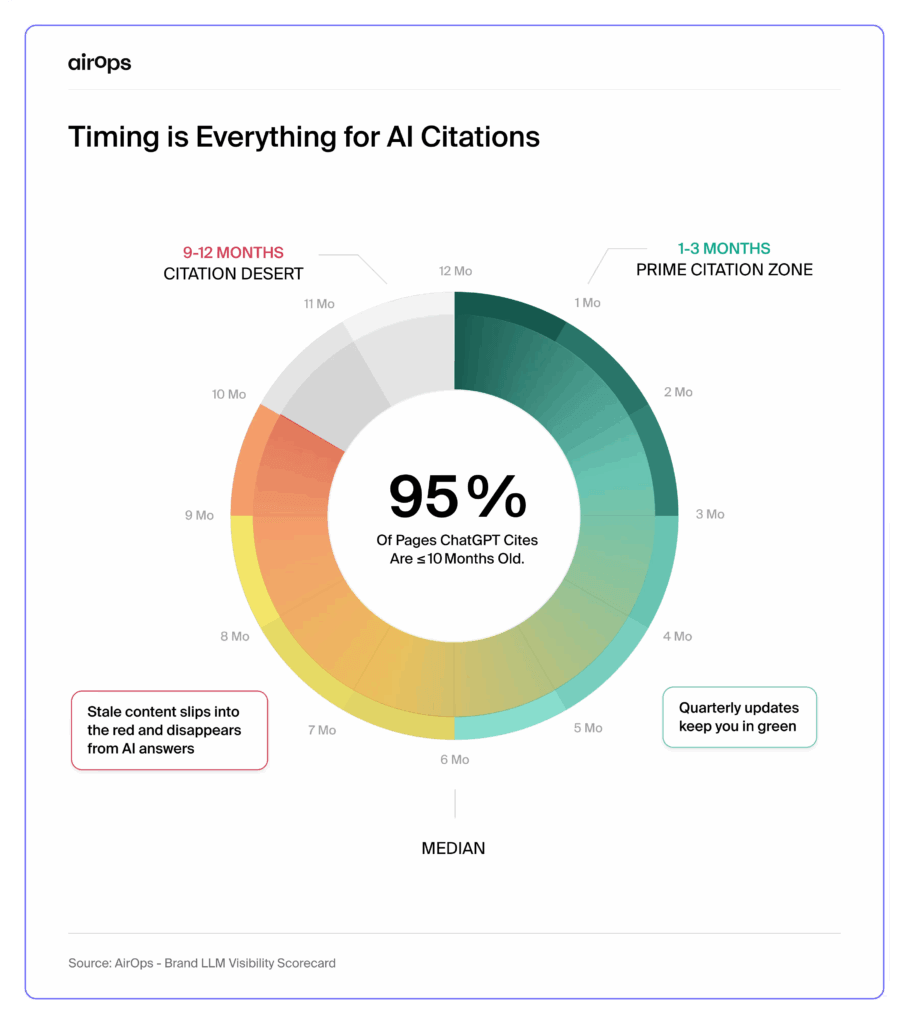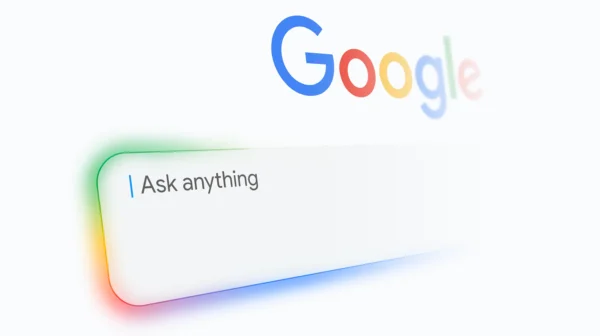Latest organic search news – August 25
We’ve compiled the essential updates from Google and the broader world of search from the last month – keeping you up to date with everything you need to know.
TL;DR
- Google’s June Core Update was a reminder that traditional SEO signals still matter – especially as AI features become more integrated into search.
- AI Mode has launched in the UK, though not everyone is seeing it yet. Usage data from the U.S. shows it’s yet to become a daily habit for the majority.
- Fresh content wins in AI: studies show LLMs heavily favour recently updated pages over older ones, even in cases where quality is similar.
- AI crawlers are being blocked by major news sites meaning earned media may be invisible to LLMs unless you’re choosing publications carefully.
- Earned media fuels AI citations: 85% of sources used by LLMs are non-paid. Strategic Organic PR is critical for AI visibility.
- ChatGPT is drifting away from Bing and now overlaps with Google more often.
- Ecommerce SEO continues to evolve fast – our webinar distils all you need to know to survce and thurve in 2025 and beyond.
- Screaming Frog + Gemini can reveal (simulated) AI query fan-outs, giving SEOs new insight into how LLMs are expanding user intent.
- Google’s new Trends API gives brands real-time search data to better plan PR, campaigns and content around demand spikes.
Explore this content with AI tools:
June Core Update: a timely reminder from Google
With the rise of AI search and LLM integrations, we touched on last month the risks of chasing the hype while losing sight of what Google actually values. Across our client base, traffic from LLMs currently accounts for just ~2% of total site traffic – a number is 100% worth monitoring and trying to influence, but not one to build an entire strategy around at the sake of all else, just yet.
The June Core Update began rolling out on June 30th and wrapped up mid-July.
It served as a timely reminder that traditional SEO visibility still matters (arguably more than ever), as Google continues to blur the lines between AIOs and core listings. We must remember that poor site quality signals don’t just affect organic rankings – they influence your chance of showing up in any Google surface, including AIOs and AI Mode.
Seeing the impact clearly
When a core update finishes rolling out, one of the most useful exercises is a bird’s-eye view of topic visibility. We run regular Share of Voice (SOV) checks across all major keyword groups and verticals we care about, and the quickest way to assess impact at scale is through a simple colour-gradient heatmap.
Here’s an example of how we visualise it:
Patterns may emerge and you can dig in.
AI Mode has finally arrived in the UK
We’ve covered AI Mode’s rollout in the U.S. in our last two roundups, but this week marks its official UK launch. Google’s conversational search feature is now ‘live’ across the UK in both the Google app and Search (no opt-in needed). Note – we are actually struggling to see it in the wild at the agency.
It first launched in the US in May, and we’ve been testing extensively since. While many are calling this the future of Google Search – I agree on the whole – the usage data so far paints a more cautious picture, albeit it is very early days:
- Adoption remains low in the U.S., as only about 2% of Google users use AI Mode.
- 53% of users never returned after their first day using it.
- Only around 20% returned twice, and just 9% became regular (5+ day) users.
Essentially, it’s capturing some attention but not perhaps as much as expected.
My colleague Cam has just wrote up in more detail on this, which can be seen here for further context and what it means for websites, along with a deeper dive from me in June’s roundup, too.
Freshness matters: LLMs favour newer content
Keeping your content updated has always been non-negotiable for SEO and CRO. At Distinctly, content re‑optimisation is part of our monthly routine. This month’s studies from Ahrefs and AirOps reinforce exactly why.
Key findings:
- AI assistants consistently cite much fresher content than traditional search results. URLs are 26% ‘fresher’ in LLMs than Google, according to this Ahrefs study of 17 million citations.
- 95% of pages cited by ChatGPT were refreshed in the past 12 months, according to this AEO Scorecard Report.

Both sources point to the same conclusion: AIOs and AI assistants heavily weight recency when selecting what to cite. That means your older content – even if high quality – may already be failing key inclusion criteria before anything even starts, reducing its chances of being surfaced or referenced at all.
What this means for you:
- Update cadence matters: quarterly-ish refreshes signal freshness to answer engines, so you must ensure you key content is kept updated.
- Structure and clarity count too: schema, H-tags, author attribution, and linking out to trusted sources – all the usual – AirOps’ research shows these boost AI’s trust in your content and oyur chances of being visible.
I always like when there is evidence of what good looks like, and in their study, they found a best-in-class example of informational content and breakdown the whys behind it – https://ramp.com/blog/invoice-audit.
The UX is great and there are lots of list, bullets, tables, definition boxes which all make the content really scannable, plus the usual expected EEAT bits on the author. Tactical use of CTAs, too. The only things I would add would be a ‘Reviewed by [name] on: [date]’ label, to showcase when it was last checked over and maybe a small summary snippet at the top of the page.
AI blockers may be hiding your PR placements and hindering your visibility goals
A recent Screaming Frog study analysed 72 national, regional and consumer news sites to see which ones block AI crawler bots, and the results have found that many high-authority, traditional news outlets are blocking AI crawlers, like those from ChatGPT or Google Gemini.
- 75% of news sites analysed blocked at least one major AI crawler
- 58% block GPTBot, OpenAI’s AI crawler, making it the most commonly blocked
- MailOnline, iNews, Metro, and BBC News block up to 91% of known AI bots
- Regional outlets are especially restrictive, blocking an average of 8 AI crawlers per site
What does this mean?
Your brand’s earned media coverage, if published on one of these sites, may be less visible to AI-generated search responses and summaries.
This matters because if AI visibility is what you are after, your good work may not be being rewarded, if all you are focusing on is top tier press.
Vetting publications for AI discoverability and not just relevance and authority is something that’s quickly becoming just as important.
So, how is this impacting digital PR strategies at Distinctly?
- From a strategic perspective, this shift in search reinforces the need to diversify our media outreach.
- With traditional press sites blocking AI crawlers, coverage (while still valuable to human readers) may not be contributing to long-term AI visibility goals.
- Alongside coverage in bigger news outlets, we’re actively focusing efforts on smaller, niche, and industry-specific publications to help ensure that earned media placements continue to feed into the discovery engines of LLMs.
These outlets may not always be the biggest names, but they’re more important than ever when it comes to relevance, crawlability, and shaping what AI knows about your brand.
MuckRack’s ‘What is AI reading?’ report – earned media is fuelling LLM citations
MuckRack’s latest Generative Pulse 2025 report has further confirmed that AI tools lean heavily on earned media when they generate responses to user queries, rather than paid media.
In fact:
- 85% of sources used by LLMs are earned media, not paid content
- 27% of citations come from traditional journalistic outlets
- New content, alongside domain authority, increase a source’s chances of being cited
This means that being covered by credible, relevant sources, are a key part of shaping the way LLMs relay information about your brand.
In short? If a user asks an LLM about a topic in your space, earned coverage helps increase the chances of your brand showing up in the answer.
ChatGPT is leaving Bing behind fast
There’s growing evidence that ChatGPT is rapidly moving away from Bing as its primary web data source and possibly toward either its own search index or a deeper integration with Google.
A recent study from Profound analysing 240 million ChatGPT citations found that, as of July 2025, citation overlap with Google has surged to 33%, while overlap with Bing has dropped to just 8%. That’s a major reversal from April, when Bing was still the more aligned engine.
Whether this signals OpenAI launching its own search index or quietly pivoting toward Google remains unclear, but the implications for SEO, content discoverability, and AI-driven traffic are huge.
The full breakdown (including leaked memos and possible scenarios) is in the post linked above and well worth a read.
How to win in ecommerce SEO in 2025 and beyond
In the last week of July, we held a webinar on this exact topic for clients and friends alike.
Some of our largest clients across all channels are ecomm and 4 of us had the opportunity to pitch for the UK’s largest ecommerce site in the summer, which required a lot of strategic thinking. It’s something we feel very passionate about as an agency.
The best thing about ecomm is the speed at which things evolve – more so than any other sector online.
The worst thing about ecomm is the speed at which things evolve – average SERP space for organic listings has dropped rapidly over the past 5 years along with click thru rates. But people do still click somewhere, and our job is now to ensure our clients are as visible across as many of the new search features as possible.
Cam and Lewis from our Organic team delivered a 50-minute session walking through exactly how we’re approaching this in 2025. If you’re in ecommerce (or SEO more broadly), the recording and deck are available here and well worth a watch.
It essentially centralises our latest thinking on what brands need to be doing to remain visible in the most competitive of sectors.
Example slides below:
SEO Tip: Use Screaming Frog to reveal AI Overview query fan-outs
Google’s AI Overviews and AI Mode rely on query fan-outs (semantically related questions to your core query) to shape what appears in generative answers.
This week, Dan at Go Fish Digital shared something on Linkedin about a workflow using Frog and Gemini that allows you to pull out (simulated) fan outs, related to your live content.
The theory being, these are other related queries Google will be looking for answers too when stitching together the answer it gives the end user, so you should be trying to answer them from your site, too.
Full workflow is linked above and from our early testing it looks very interesting. More to come next month.
This month, we tested a Screaming Frog + Gemini workflow to extract those fan-outs at scale across a site’s content.
Here’s how it works:
- Screaming Frog pulls the H1s from your pages.
- A custom JavaScript sends each one to Gemini’s API.
- Gemini returns a simulated AI Overview response and a list of related queries tied to that H1.
The result? You get visibility into the types of query Gemini associates with your content – insight that’s incredibly useful for spotting topic gaps, shaping content strategy, and ensuring you’re optimised for AI-powered search.
Google launches a Trends API (alpha version) for live search data
Google has launched an alpha version of its new Trends API, which currently gives approved users access to up to 5 years of real-time search interest data, with breakdowns by region and time period. Search data through this tool will also be accessible in daily, weekly, monthly, and yearly aggregations.
This is a tool worth keeping an eye on, as it means improved access to data to shape PR campaigns, pitch timing, and performance reporting. This should enable brands to better tie in their stories and ideas to consumer search behaviour, removing much of the guesswork from the planning stage.
This will mean that:
- We can better align campaigns based on when interest naturally spikes
- Trend analysis becomes measurable and repeatable, rather than anecdotal
- It’s ideal for brands aiming to align DPR with search visibility and seasonality
Stay ahead in SEO with Distinctly
Enjoyed this roundup? Stay updated with the latest Organic trends, tips, and exclusive insights by subscribing to our newsletter.



